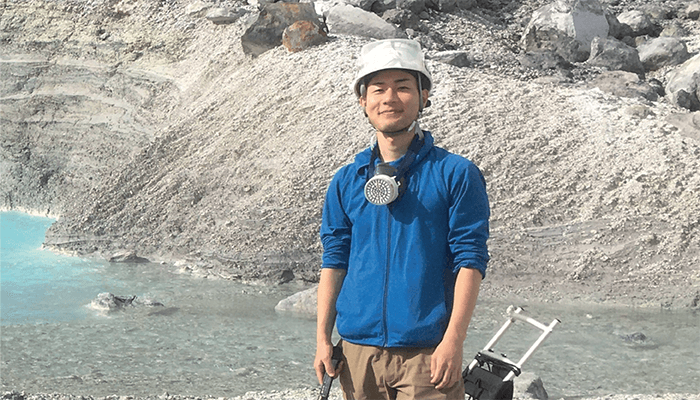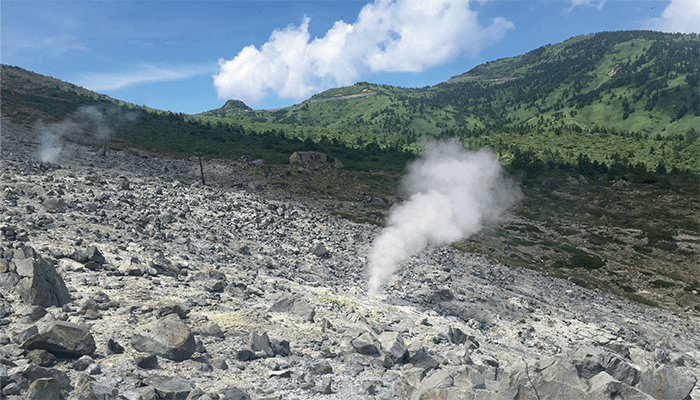In 2014, Japan’s Mount Ontake erupted unexpectedly, claiming the lives of 63 hikers. With no preceding earthquakes that might have warned authorities, the event spurred a tragic realization – a method to measure the progression of eruptions was vitally needed.
A team of researchers at the University of Tokyo, Japan, decided to explore whether the ratio of atoms in specific gases released from volcanic fumaroles could provide an indicator of what was happening to the magma deep below (1). Between 2014 and 2021, they measured isotopic compositions of noble gases in six fumaroles at Kusatsu-Shirane volcano in Japan. Noble gas mass spectrometry revealed that changes in the ratio of argon-40 and helium-3 can indicate magma frothiness – which, in turn, can signal the risk of different types of eruptions. To gain more perspective, we spoke to study co-author Tomoya Obase of Hokkaido University, Japan.

What were your main findings?
Understanding the state of magma is crucial for predicting volcanic activities, such as major eruptions. Our work revealed that, by analyzing volcanic gases, we can detect slight changes in magma activity that could not be detected by other volcano monitoring methods such as volcanic earthquake observation or crustal deformation.
Our method revealed significant changes in the magma-derived helium-3/argon-40 ratio, which is related to magmatic unrest. By modeling magma degassing processes, we revealed that the ratio reflects magma vesicularity, or how much the magma underground is foaming. Magma’s vesicularity controls its buoyancy and the amount of magmatic gas provided to the hydrothermal system beneath a volcano. The former is related to magma ascent, which could potentially trigger an eruption; the latter is related to a risk of phreatic eruption, in which the water pressure in the hydrothermal system increases and causes an eruption. Therefore, our findings strongly suggest that the noble gas isotopic ratio is important for monitoring magma conditions related to volcanic activity.

Which analytical techniques did you use – and what were their advantages?
We used a state-of-the-art noble gas mass spectrometer that precisely measures noble gas isotopes and ultra-trace isotopes such as helium-3. Noble gases – including helium and argon – are chemically nonreactive, so noble gases in volcanic gas change their composition very little during ascent through the subsurface. This is greatly advantageous for gaining information about magma underground.
Were there any major challenges you had to overcome during the research?
Volcanic gas sampling in a field far from the laboratory is challenging, not only because it is time-consuming, but also because the sample is often contaminated by atmospheric gases before analysis. We tried to conduct our analysis as soon as possible after collection to avoid this problem.
It also takes a long time to analyze volcanic gas composition because gas samples must be brought back to the laboratory. Currently, we are developing a portable mass spectrometer for on-site analysis of noble gas isotope ratios in volcanic gas. On-site analysis has two advantages. First, it reduces the risk of atmospheric gas contamination, and second, it allows us to perform real-time monitoring. Portable mass spectrometry will help us detect, as early as possible, changes in magma activity that may be associated with future eruptions.

References
- T Obase et al., Sci Rep, 12, 17967 (2022). DOI: 10.1038/s41598-022-22280-3.




